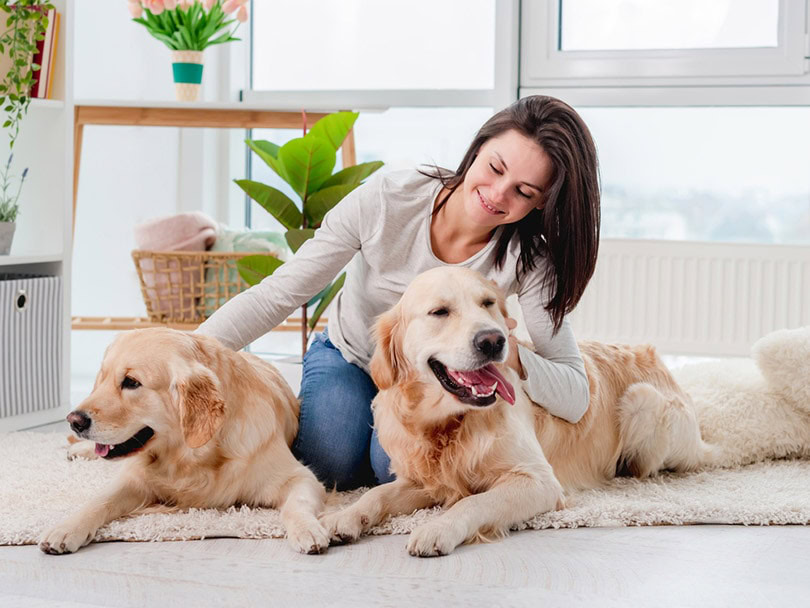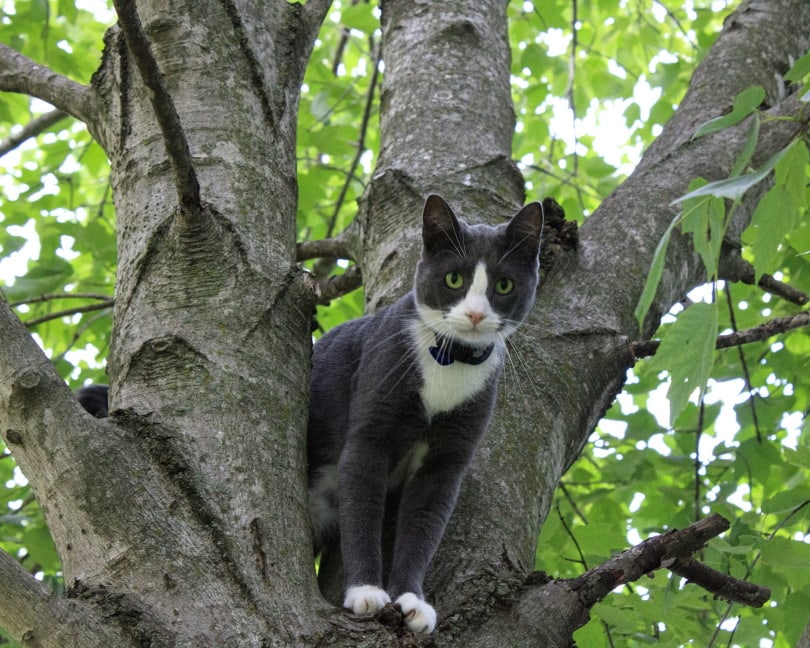VET APPROVED

The information is current and up-to-date in accordance with the latest veterinarian research.
Learn more »Click to Skip Ahead
Taking care of someone’s beloved pet is a big responsibility. Naturally, you’ll want everything to go as smoothly as possible. If your worst nightmare happens and the pet you’re responsible for refuses to calm down, it can be as upsetting for you, the pet, and their owners. Dealing with separation anxiety is a common challenge faced by many pet sitters. Separation anxiety occurs along a spectrum: from low-key and passive behaviors like moping to destructive and even aggressive behaviors, such as tearing at furnishings or even growling and biting.
An animal suffering from separation anxiety needs a pet sitter who is confident in their abilities to take control and handle the situation. If you prepare adequately, develop a keen understanding of the signs and drivers for the problematic behaviors, and most crucially—if you can keep your cool—you will successfully navigate this challenge.
We’ve got 10 tips to help you create a peaceful and relaxing experience for all parties—you, the pet, and their owners—no matter what behavioral signs of separation anxiety you face.

The 10 Tips to Handle a Pet’s Separation Anxiety
1. Communication is Key
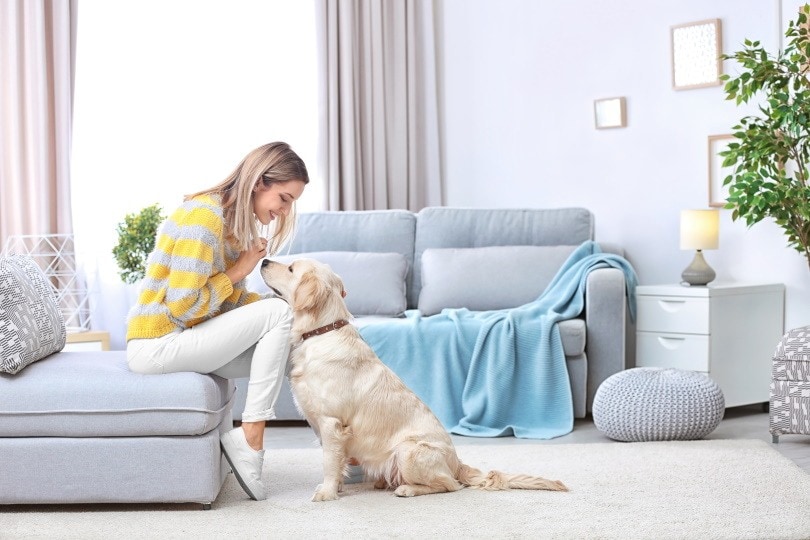
Set yourself up for success by speaking with the pet owner in advance. A face-to-face meeting is best; a phone or Zoom call is adequate. Never go into a pet-sitting experience without having a conversation upfront. Be sure to ask about separation anxiety specifically. Has the pet ever exhibited any stress-related behaviors in the past? You will want to work out their triggers and what mitigates their fearfulness. Being well-informed is the first step to a happy and safe experience for everyone involved. It is important to have an honest conversation and set up expectations, that way if the pet you are sitting with needs to be around people 24 hours a day, you can plan accordingly and prepare yourself to have a new shadow while the sit lasts. Or be honest with yourself if this is not something you can do due to other responsibilities. The last thing you want to have is a bad review or experience because the neighbors complained to the owner about a dog howling while you went out shopping for groceries.
2. Meet the Pet in Advance
Ideally, the conversation above would happen when you pre-meet the pet you will be taking care of. It’s never a great idea to go into a pet-sitting experience without meeting the pet and owners first. This is your opportunity to have the pet get accustomed to your presence—and vice versa—to observe how they generally behave, to pick up on their unique personality quirks, and to begin getting a sense of how you both may fare without the pet’s owner in the mix. This is also the perfect time to find out if the pet has undergone any obedience training and make sure you learn how to elicit all of the desired behaviors for their basic commands.
3. Gradually Allow the Pet to Become Acclimated
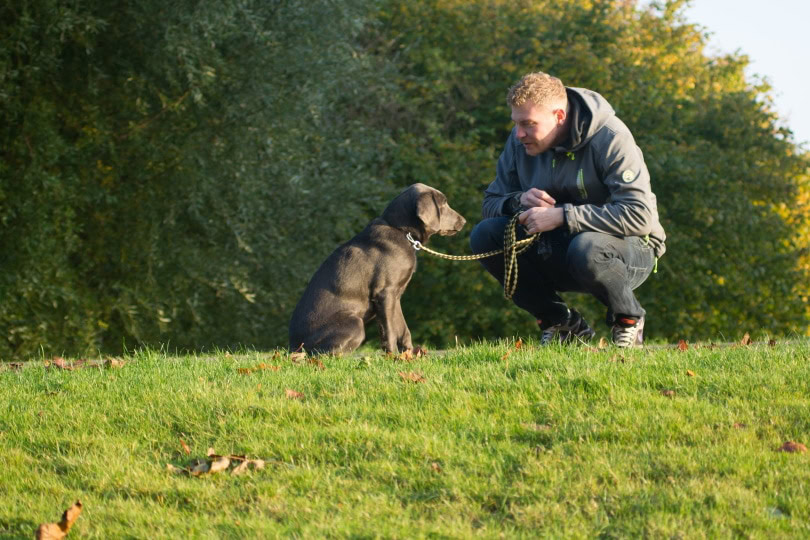
All animals are unique, with their own temperaments and characters. Even famously extroverted pet breeds—such as Labradors and Golden Retrievers—can have shy or nervous individuals among their ranks. Equally, some people dismiss smaller mammals, including rats, rabbits, and gerbils, as being too small and passive for their anxiety to manifest in a way that matters. But it’s not fair to any animal to unnecessarily subject them to feeling frightened or confused. Take your time to acclimate the pet to your presence and smell.
Go at their pace: give them control over when to approach and how you interact. Never force contact—this will help them trust you and go a long way toward reducing their fears. Whenever they are calm in your presence, take the opportunity to reinforce this moment with a yummy treat.
4. Keep in Touch
When owners and pets are separated, it’s natural for there to be anxiety on both sides. Owners away from their beloved pets appreciate frequent updates. No matter whether things are going swimmingly—or the direct opposite—it’s important to provide owners with daily photos and reports on how their buddy is doing. This is a surefire way to be invited back to pet sit again! If you encounter difficulties, try to resolve them before worrying the owner. An honest report without exaggerating the issue is ok, even better if you manage to progress. If you can’t make progress, then draw on the owner’s greater experience with and knowledge of the pet to help you. They can strategize with you to resolve the separation anxiety quickly and thoroughly.
5. Stick to the Pet’s Routines and Habits
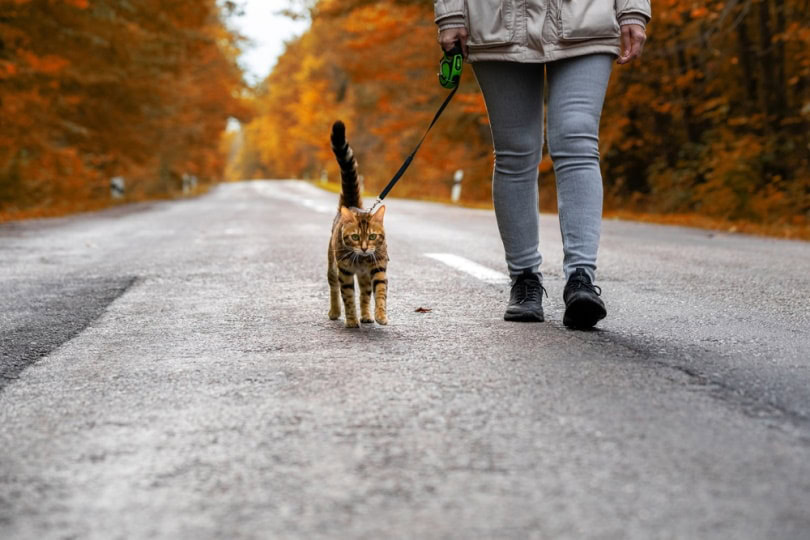
Many pets are happiest when they have the comfort of repetition and the familiarity of routine. The pet you are taking care of is undergoing a major change—the absence of the people they know and love most. Try to keep everything else going on around them stable and consistent. Scheduled exercise, mealtimes, playtime, and any other activities should happen on time and in the usual ways. This is not a time to introduce a new dog park or a trip outdoors for an indoor cat. Stick with the tried and true, and the pet will feel more at ease in your care.
6. Manage Their Environment
Creating a safe and comfortable space for your pet is essential in managing their separation anxiety. You can achieve this by providing familiar bedding, interactive toys, and calming aids like pheromone diffusers. Background noise can also help mask external sounds that may trigger anxiety. It is important to avoid confining your pet to small spaces unless they are already conditioned to view them as safe. Gradual desensitization to being alone and positive reinforcement for calm behavior are also recommended.
7. Distract and Delight
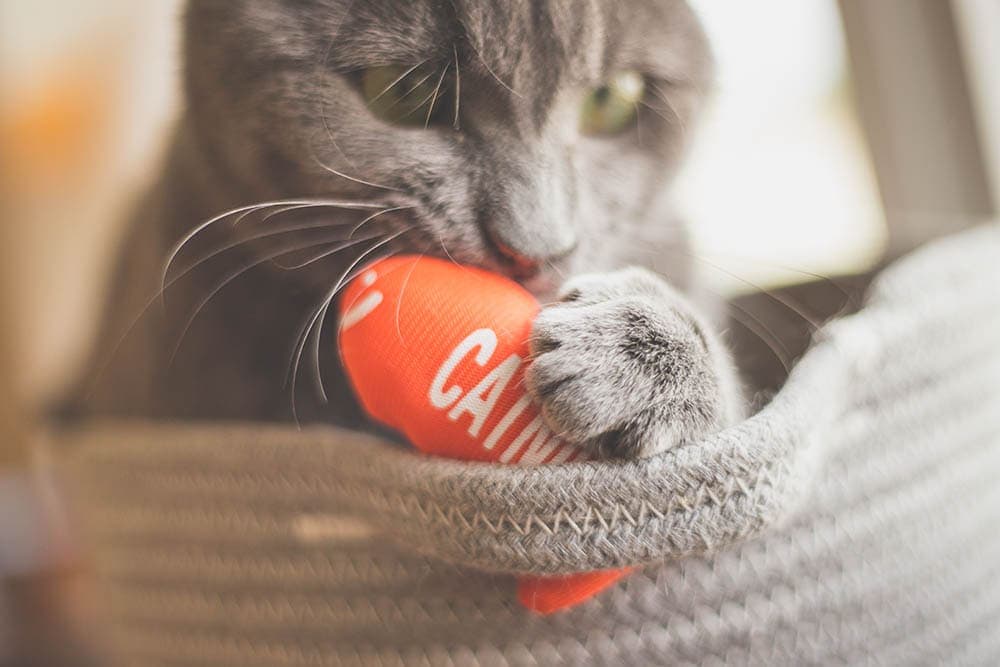
If the pet you’re sitting on is busy having a wonderful time, then it’ll have fewer moments to ruminate on where their owners have gone. Provide enriching and fun moments for your new friend. New toys, food puzzles, and novel activities can provide the mental and physical stimulation necessary. Make sure any changes you introduce have been vetted by the owner, and consider adding photos or videos of these happy moments to your daily messages. When owners surrender control of their pets to another human—even for a short time—they are sure to welcome any evidence that the handoff has gone smoothly.
8. Tire Them Out
Who has the energy to be anxious when their tired? If the pet you’re pet-sitting has a favorite activity, make sure to engage them in it. Exercise produces dopamine, and dopamine makes pets happier. So, throw that ball and point that laser! Remember, activities like these are also moments for socialization and bonding between you and your charge. The more they like and trust you, the more they can drop their guard and be happy. There is no better way to build a trusting relationship with a pet than play and positive reinforcement.
9. Calm Them Down
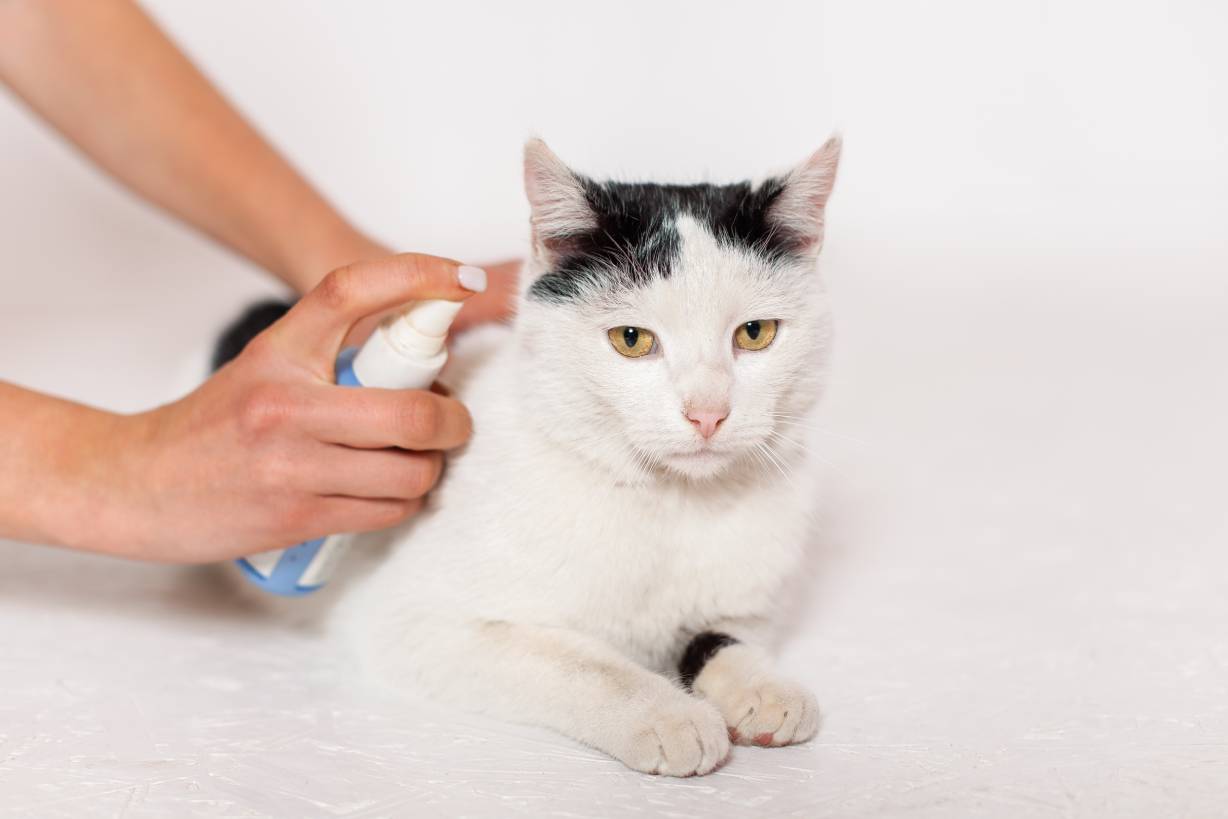
For highly anxious pets, some amazing products on the market can help with anxiety. Calming products for pets include items like acupressure collars, relaxing sprays, pressure wraps, and even pheromone diffusers. Only introduce these gadgets and devices if you’ve had this discussion in advance with the pet owner. It’s also vital to ensure the items you select are safe for use on the specific species and breed of animal you’re taking care of.
10. Keep Veterinary Contact Information on Hand
It’s not unheard of for anxious pets to injure themselves—for example, while digging under fences or tearing through furniture. When an animal is packed with adrenaline, fight or flight gives them the motivation and strength to do incredible damage to property—and to themselves. Lacerations, poisonings, and blockages caused by ingested materials—if it all goes badly wrong, you may need the support of a veterinarian. Ensure you have their contact information, and don’t be afraid to use it if necessary.

What Are the Signs of Separation Anxiety in Pets?

When pets are parted from their owners, many are likely to experience separation anxiety because it is a common behavioral issue. This is particularly applicable to dogs and cats. There is a wide range of behavioral signs associated with this condition, for example, destructive behavior, excessive vocalization, toileting issues (peeing or pooping within the home), and repetitive or obsessive behavior.
Separation anxiety can manifest itself in a variety of ways, depending on the type of animal:
- Excessive barking or whining when left alone
- Furniture or household items destroyed
- Getting out of the house or yard
- Circling or pacing
- A lack of appetite
- Lethargic or depressed mood
- Meowing or vocalizing a lot
- Furniture and household items are destroyed
- The cat urinates or defecates outside the litter box
- Behaviors such as overgrooming that are repetitive or obsessive
- Appetite loss
- Laziness and sluggishness

Final Thoughts
In conclusion, pet sitting can be a rewarding and uplifting experience for you and the pet. When that pet has separation anxiety, the task is a little more daunting. It’s normal for pets to feel upset and confused when their person goes away, and it’s your job to assuage their fears. Learning about the pet’s background, environment, and behavior is key to managing their anxiety when you are pet-sitting.
Keeping them busy with activities and giving them ample attention will help reduce their stress levels so that they have a positive experience. By following our tips, you can provide a relaxing, enjoyable environment for your temporary charge. By knowing in advance what issues you may face, you can properly prepare yourself and reassure their absent owners that everything is well while they are away.
Featured Image Credit: atyana Vyc, Shutterstock
